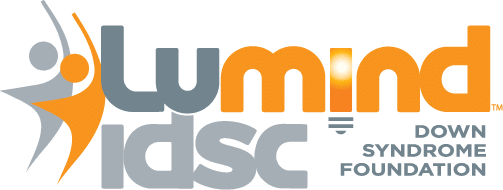April 19, 2021 – This week, the Down syndrome community is celebrating the release of an article in the journal: Translational Science of Rare Diseases. Led by LuMind IDSC’s Chief Science Officer, James Hendrix, an international team of Down syndrome experts has charted a unified path toward a new future for Down syndrome research with the article: “Opportunities, barriers, and recommendations in down syndrome research.”
In 2019, the U.S. National Institutes of Health (NIH) announced an initiative to improve their Down syndrome research program. Organizations like LuMind IDSC and the National Down Syndrome Society (NDSS), among others, were tasked with identifying the critical areas where research is needed to bridge the gap between healthcare and an improved quality of life for individuals with Down syndrome.
In partnership with more than 50 scientists and medical experts, LuMind IDSC and NDSS convened with multiple groups involving multidisciplinary scientists, medical professionals, caregivers, and advocates to review the current state of Down syndrome research. To better understand the numerous medical conditions and disorders that commonly affect individuals with Down syndrome, the researchers were organized in separate working groups that focused on advancing the understanding of:
- Alzheimer’s and aging
- Behavior and autism
- Cancer
- Dental and oral health
- Heart and vascular
- Immunity
- Musculoskeletal
- Metabolic and obesity
- Sleep and respiratory
- Speech, language
- Hearing, and vision
- Basic research (including cognitive development)
- Community engaged research
The objective was for each working group to develop their own recommendations in order to make the case to the NIH that an investment in research would help maximize the health and quality of life of individuals with Down syndrome throughout their lifespan.
As a result of their investigation, some of the recommendations made by experts to the NIH are:
- Increase research investment in Longitudinal Studies, ongoing in adults and pediatrics to provide valuable data of the population over the course of their lifespan,
- Increase support for randomized clinical trials, research infrastructure open access,
- Centralized Down syndrome data,
- Support Down syndrome research training for clinicians and scientists,
- Research inclusion since individuals with Down syndrome are commonly underrepresented or excluded from clinical research.
At the same time, there is a demand for increased funding in areas of medical need that have been historically not funded or underfunded by the NIH.
The aim of this exercise is to exhort both the biomedical research community and government stakeholders to develop strategies and solutions that more effectively meet the needs of the Down syndrome community, and to highlight the critical challenges that must be addressed without any further delay.
For the comprehensive list of recommendations find it in April in Translational Science of Rare Disease.
About the LuMind IDSC Foundation
The LuMind IDSC Foundation (LuMind IDSC) is a nonprofit organization that accelerates research to increase availability of therapeutic, diagnostic, and medical care options and empowers the largest online community of individuals with Down syndrome and their families with education, resources, connections, and support. Since 2004, LuMind IDSC raised a total of $85M in funding for Down syndrome research to prevent Alzheimer’s onset, improve cognition, develop gene therapies, and advance understanding. Visit www.LuMindIDSC.org to learn more or get involved.
